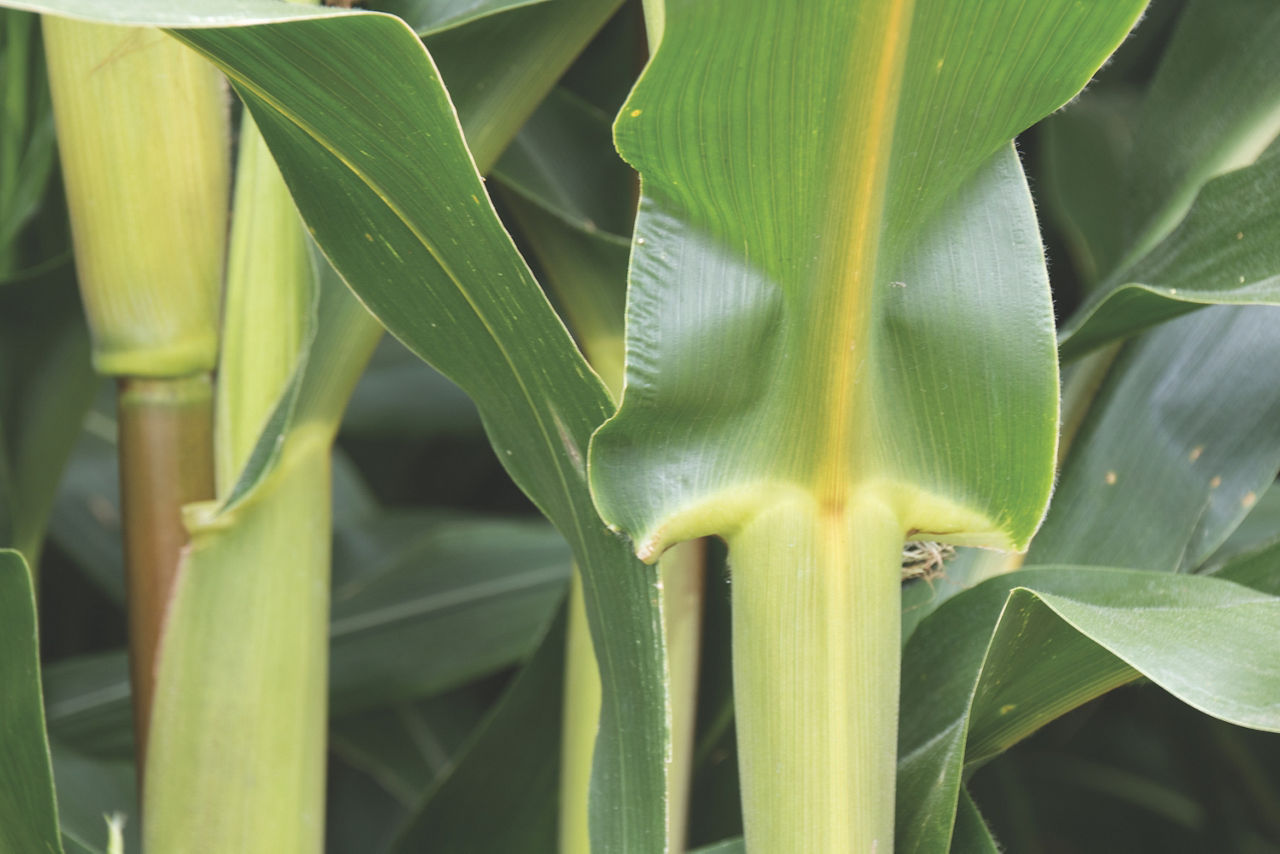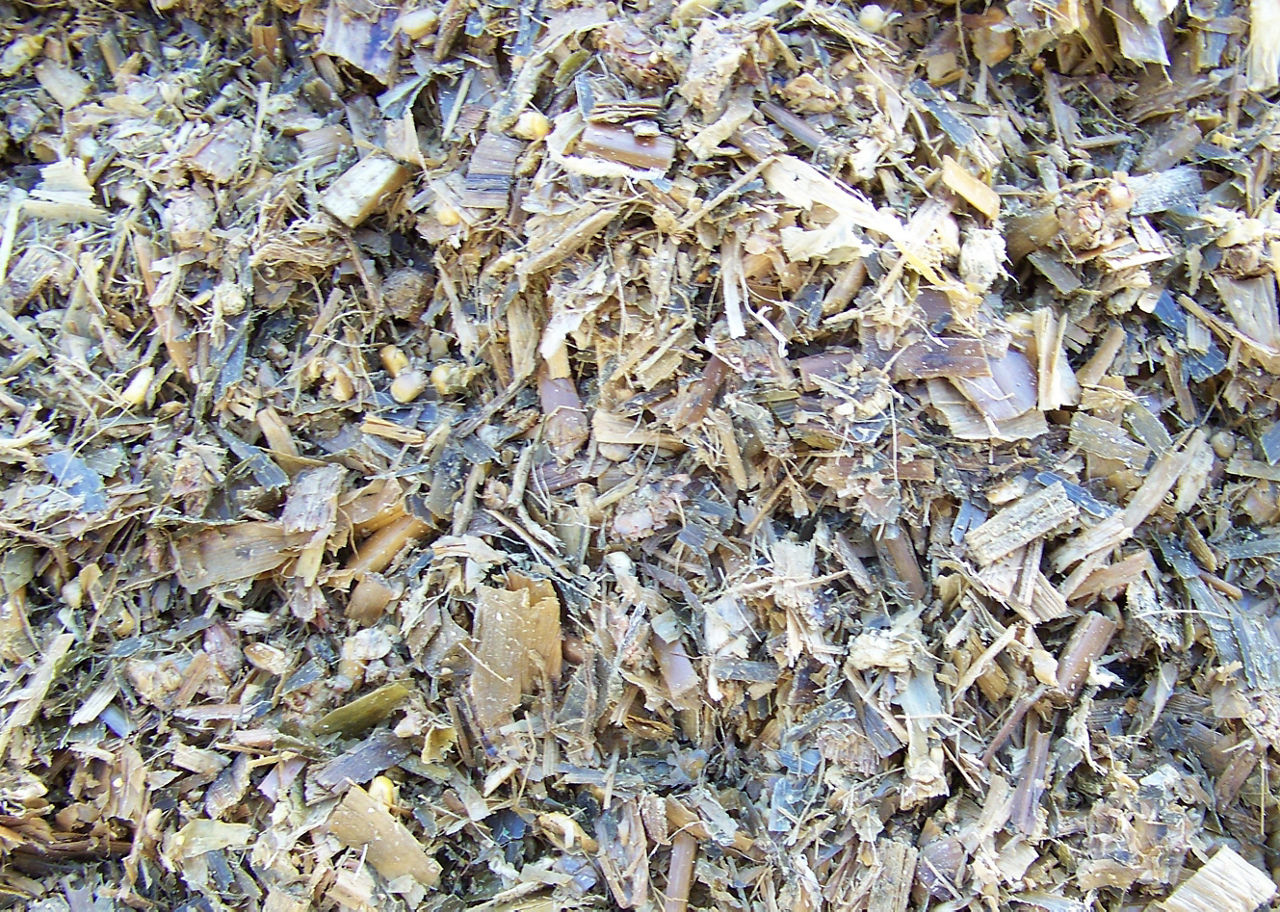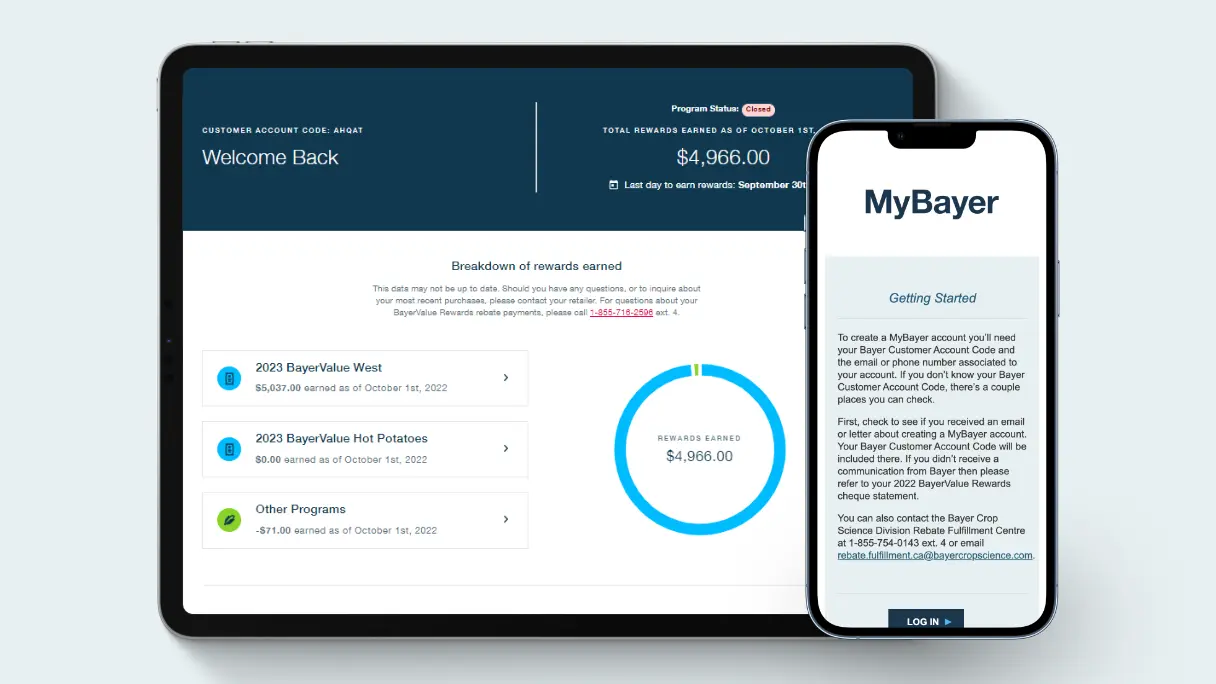3 READ-TIME
Comparing Traditional Dual-Purpose and Brown Midrib Corn Silage Products
November 30, 2021
- Dual-purpose corn products have high grain production potential and moderate fibre digestibility.
- Brown midrib (BMR) corn products have less grain production potential and higher fibre digestibility than dual-purpose corn products.
- Most BMR silage production is fed to high producing dairy cattle.
- BMR corn was first discovered in dent corn at St. Paul, Minnesota in 1924. It is as a naturally occurring (non-GMO) mutation of regular dent corn.
- BMR corn products have been identified as having less lignin in the cells of the fibre.

Figure 1. Brown midrib (BMR) corn stalk on left and midrib on right. Photo courtesy of Mike Rankin Hay and Forage Grower.
What is Lignin?
Lignin is an organic substance that binds the cell walls in fibre. Lignin is an important key structural material found in cell walls that is needed for support (stems) in a vascular plant.1
Why is lignin content important to silage quality?
- Rumen microorganisms cannot breakdown lignin.
- Lignin is the key obstacle to fibre digestion as it obstructs enzyme access to the digestible fibre fractions of cellulose and hemicellulose.
- Less lignin improves performance associated with reduced gut fill and greater passage rate.
- Greater digestibility of forage fibre is desired for productivity and profitability. Low digestibility promotes rumen fill, limiting consumption and milk production. Fibre is the most common carbohydrate in forages.
Brown Midrib Corn Products
The BMR gene is naturally occurring; however, the corn products that are currently offered for sale have been genetically modified to include insect and herbicide traits also offered in non-BMR corn products. BMR corn products can bring a 10% or greater increase in fibre digestibility over a dual-purpose silage product, leading to better animal performance when fed to a high-producing dairy cow. This feed stuff is more highly digestible which corresponds to increased intake potential for ruminate animals. Feeding BMR silage to early lactation dairy cows can help increase peak milk production. Higher peak milk production nearly always translates into higher total lactation yields (more milk produced). Many nutritionists add grain (as an energy source) to balance a dairy ration. When a ration is built around a BMR silage source, more energy is available from the forage part of the ration; therefore, less grain will be required in the ration to reach the desired energy level.
Considerations Prior to Selecting a Brown Midrib Corn Product
- Lower yield potential - Improvements have been made to increase the yield potential of BMR corn products; however, a yield drag of 7 to 10% is still common. The yield drag can increase to 10 to 20% if the wrong relative maturity or wrong product is selected when compared to non-BMR corn products. Lower yield potential should be expected with BMR corn, and a dairy with limited acres available to produce corn silage may be required to purchase additional silage from other producers.
- Starch content - BMR products have consistently less starch in the silage when compared to dual purpose corn product.
- High seed costs - Seed cost for BMR products can be 10 to 20% higher than dual-purpose products with the same trait package.
- Stress tolerance - In general, BMR corn products have less drought stress and disease tolerance than dual-purpose corn products.
- BMR products should be planted on higher producing fields to help reduce the concern over drought and other stresses that could reduce yield potential.
- Standability issues – BMR corn products may have a higher risk of plant lodging or bowing in the presence of high winds which can cause harvest problems.
- Separate storage - BMR products should be stored and fed separately to get the most benefit from the high fibre digestibility and high dry matter intake potential of a BMR silage ration.
Feeding Brown Midrib
After weighing the disadvantages of BMR production and storage, the producer then must understand the challenges of formulating a ration and feeding a BMR silage product.
- The herd nutritionist must understand how the BMR product will differ from a dual-purpose product-based in the ration. The nutritionist will need to adjust the ration for higher fibre digestibility and intake rates.
- More BMR silage can be fed, as a percentage of the ration, especially to the high producing animals in the herd (22.7 to 27.2 kg per day).
- A transition from a dual-purpose silage-based ration should be made over a week in several steps before the BMR silage ration can be fed to the herd at a 100% BMR level.
- The BMR base silage ration can provide increased energy from the fibre; therefore, less grain is needed to meet the energy requirement in the ration.
- Nutritionists desire a slightly longer chop length (about 1.9 to 3.2 cm) for BMR products to help with physically effective fiber levels.
- Always monitor the herd and fine-tune the ration as needed to optimize feed use and milk production. Pay special attention to manure consistency, milk components, and milk urea nitrogen (MUN), and adjust the ration as needed.
Lignin Variability in Silage Production
Lignin variability in a corn plant can be seen year to year in the same corn product depending on the changes in the environment and the amount of stress during the growing season. Physiological maturity of forages also influences lignin content. Along with genetics, environmental influences have been observed to alter both concentration and composition of forage lignin which will affect the fibre digestibility2. When comparing silage products, a dual-purpose corn product can be expected to produce more milk per hectare or acre but less milk per ton in most situations.

Figure 2. Brown midrib (BMR) silage.
Sources
1 Moore, K.J., and Jung, H.G. 2001. Lignin and Fiber Digestion. Journal of Range Management 54(4):420-430. https://www.researchgate.net/publication/262137580_Lignin_and_Fiber_Digestion.
2 Jung, H.G. 1989. Forage lignins and their effects on fiber digestibility. Agronomy Journal. https://acsess.onlinelibrary.wiley.com/doi/abs/10.2134/agronj1989.00021962008100010006x.
Myers, M. and Amaral-Phillips, D. Choosing a corn silage variety. University of Kentucky. https://afs.ca.uky.edu/dairy/choosing-corn-silage-variety.
Web sources verified 08/07/20.
Legal Statement
Performance may vary from location to location and from year to year, as local growing, soil and weather conditions may vary. Growers should evaluate data from multiple locations and years whenever possible and should consider the impacts of these conditions on the grower’s fields.
Bayer and Bayer Cross are registered trademarks of Bayer Group. Used under license. All other trademarks are the property of their respective owners. ©2021 Bayer Group. All rights reserved. 1032_S3_CA
